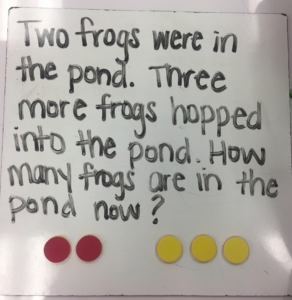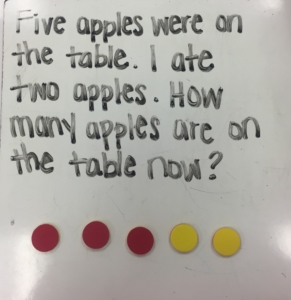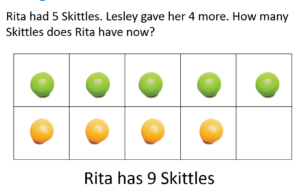According to MAFS.K.OA.1.1, students in kindergarten are required to, “Represent addition and subtraction with objects, fingers, mental images, drawings, sounds (e.g., claps), acting out situations, verbal explanations, expressions, or equations.” They are also required to, “Solve addition and subtraction word problems, and add and subtract within 10, e.g., by using objects or drawings to represent the problem.” (MAFS.K.OA.1.2)
As students begin to understand addition and subtraction, the focus should be on joining and separating situations. These situations should reflect students’ real-world experiences with joining and separating. When exploring joining and separating situations, students will act out the situation using tools or pictures. This is called direct modeling. Direct Modeling will help them develop a strong foundation of the operations. As students directly model the problem, the focus should be on using the ACTIONS in the problem to determine the operation, NOT KEYWORDS.
When solving a problem similar to this, counters may be used to model the action of the frogs jumping into the pond.

Or they can be used to model the eating of apples.

Tens frames are also a great tool to be used in conjunction with counters to model the actions in a word problem.

This hands on approach will help Kindergarten students develop a strong understanding of addition and subtraction concepts through the actions of joining and separating.